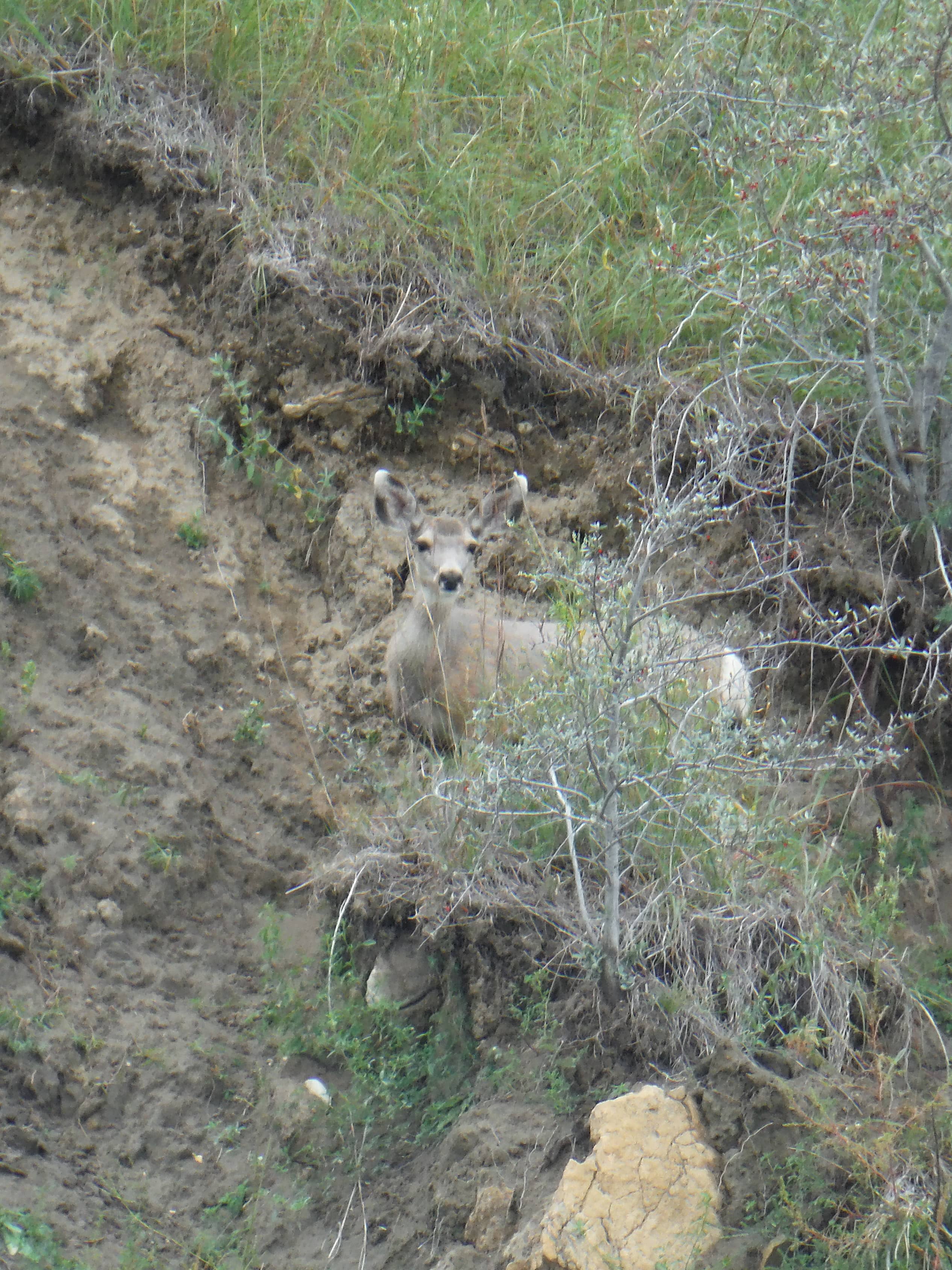
In Hiding. Thicker cover this season and better forage has helped mule deer populations in western North Dakota do well, despite recent environmental challenges. Simonson Photo
By Nick Simonson
North Dakota’s populations of mule deer heading into the start of archery season are doing well after weathering the rigors of this spring’s late snow storms and the drought of 2021, and it is likely that a strong population of mature muley bucks will be available for those patient and cautious enough to spy them and sneak up on them, according to North Dakota Game & Fish Department (NDG&F) Wildlife Division Chief Casey Anderson.
“Obviously with that drought we were a little skeptical on what would happen over the winter just because animals are coming into winter a little bit depleted. Out west, winter wasn’t that bad. We did have those spring storms, but it seemed like [mule deer] came through those okay, because the rest of the winter wasn’t too bad. Usually, they’re compounding when you get those spring storms and you’ve had a bad winter, it’s the last straw they can take. But this one, they seemed to handle pretty good,” Anderson relates.
Surveys by the agency confirmed that fact this spring, as tallies showed a modest increase in populations. While overall mule deer fawn production was down in 2021, the survival of last year’s young was better than average, helping to increase the bootstrap counts coming into summer. With mild conditions and plenty of moisture, the summer was also conducive to animal survival, and good numbers of mule deer should greet hunters as they set off into the rugged breaks and badlands of western North Dakota on their fall hunts.
“We did our spring mule deer counts and they were up about 13 percent from 2021, and so that was a good sign. That means we had good overwintering of the fawns we had, even though our fawn production was down the year before. But the spring counts were up so a lot of them survived the winter. So going in, there should be a little bit stronger population than last year,” Anderson explains.
In contrast to last summer, fawning efforts seemed to have gone over well with lush conditions in the badlands following the spring precipitation, and continued green and thick cover existing at this point late in the summer. That will likely help with the recruitment the of mule deer fawns into the population this year out in the badlands, but also provide ample cover for mature deer to utilize.
“The habitat that’s there looks good. Anecdotally, so far what we’ve been hearing and seeing when we’re out in the field, there are a number of fawns on the ground, and it looks like there’s some twinning going on. Those are good signs. We’ll actually do our fall mule deer counts coming up, in not quite a month we’ll start those, when leaves start dropping and we can take a decent look and see what our fawning reproduction was,” Anderson advises.
In addition to a rebounding overall population of mule deer in western North Dakota, Anderson expects a heightened possibility of more quality bucks on the landscape, as deer from four and five years ago are reaching maturity and growing the largest racks of their lifetimes. However, simply expecting a trophy-caliber mule deer to show up may be wishful thinking, as hunters should expect a good deal of exploration and work to find the muley of their dreams; but the timing is right for those extra efforts this fall, according to Anderson.
“You’ve got to look back a few years. For example, in 2017, we had a [mule deer] count that was quite a bit higher than we did in the last few years, and so those ’17-’18 years are probably where your bigger bucks are going to come from. There’s a potential for a number of those to be out there, because our counts were fairly good back in ’17 and ’18 compared to the last few years. I would say the chances of coming across one would be decent, the question is do you have the patience and the abilities to get where they are, sometimes that’s the badlands’ rule,” Anderson concludes.
North Dakota’s archery deer season, which includes both whitetail and mule deer, opens at noon on Fri. Sept. 2 and runs until Jan. 1, 2023.
